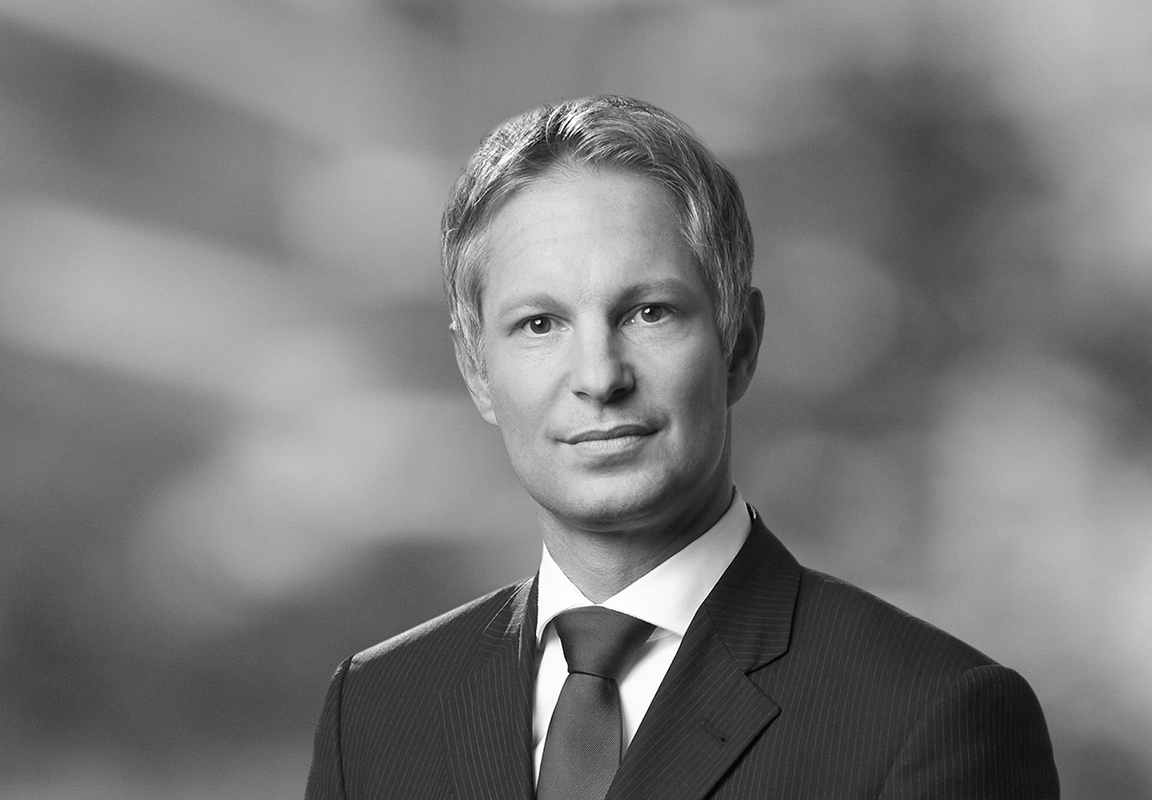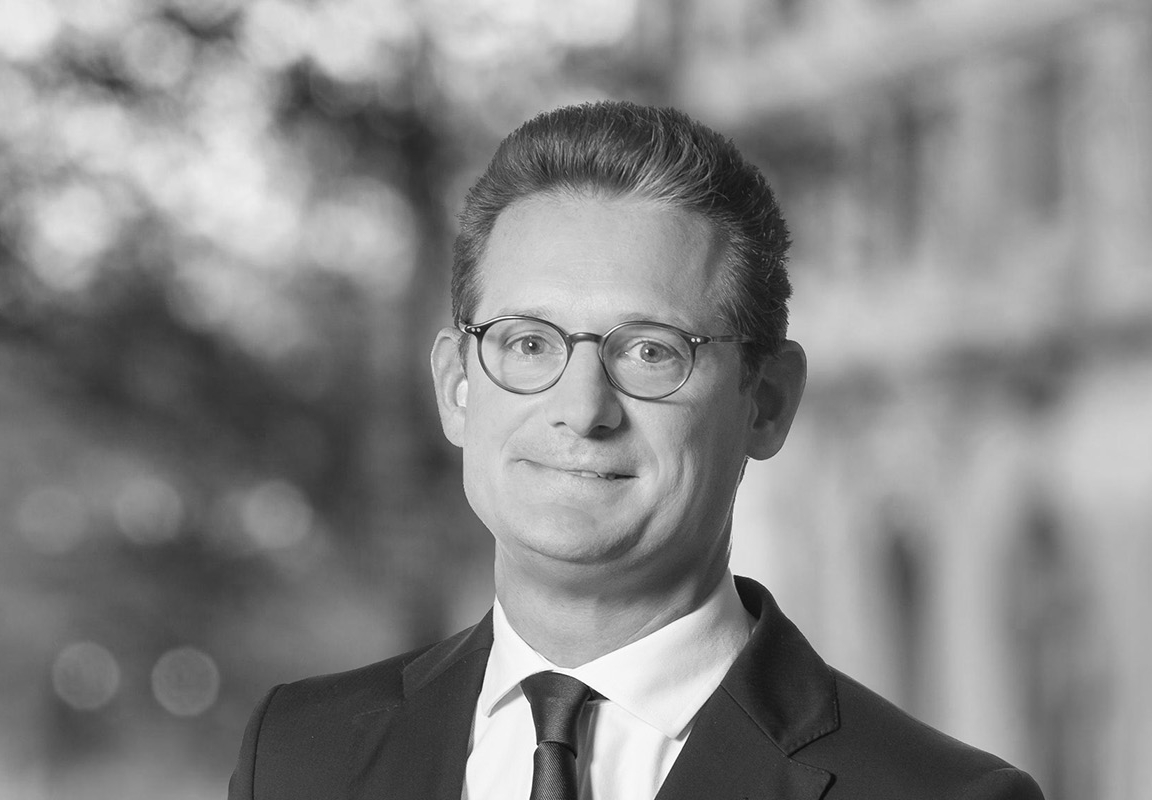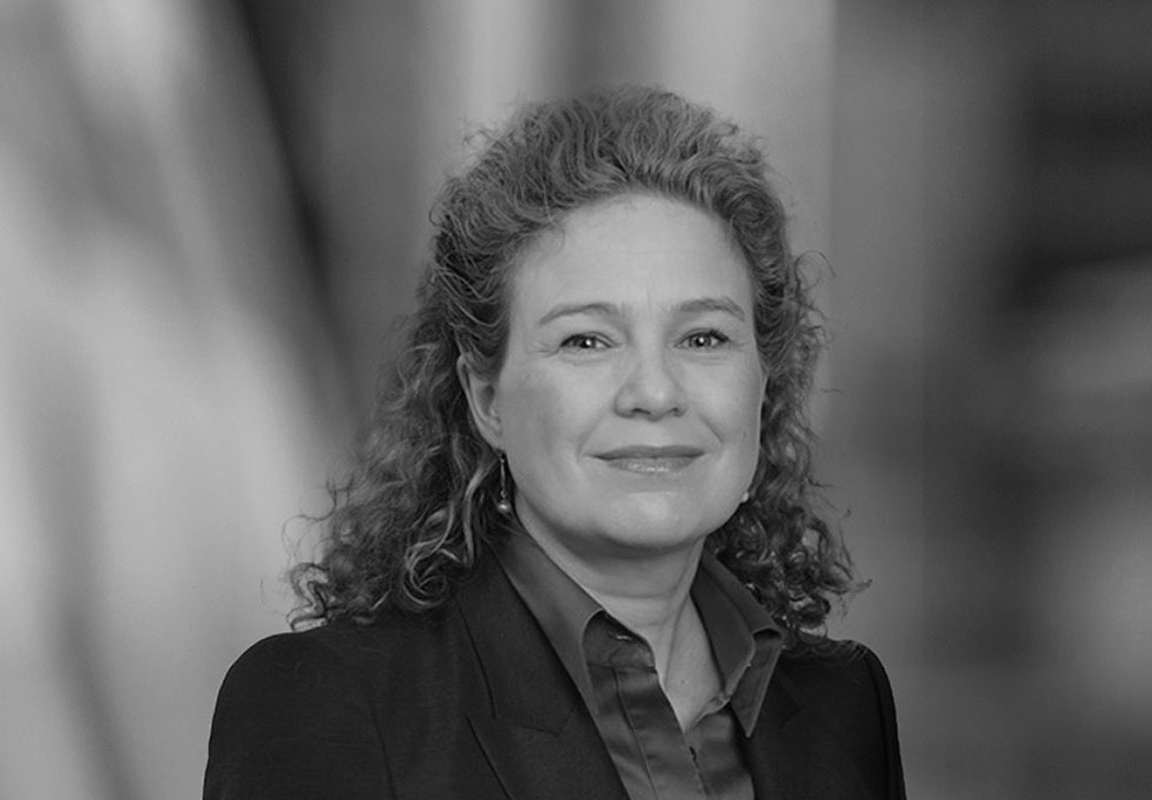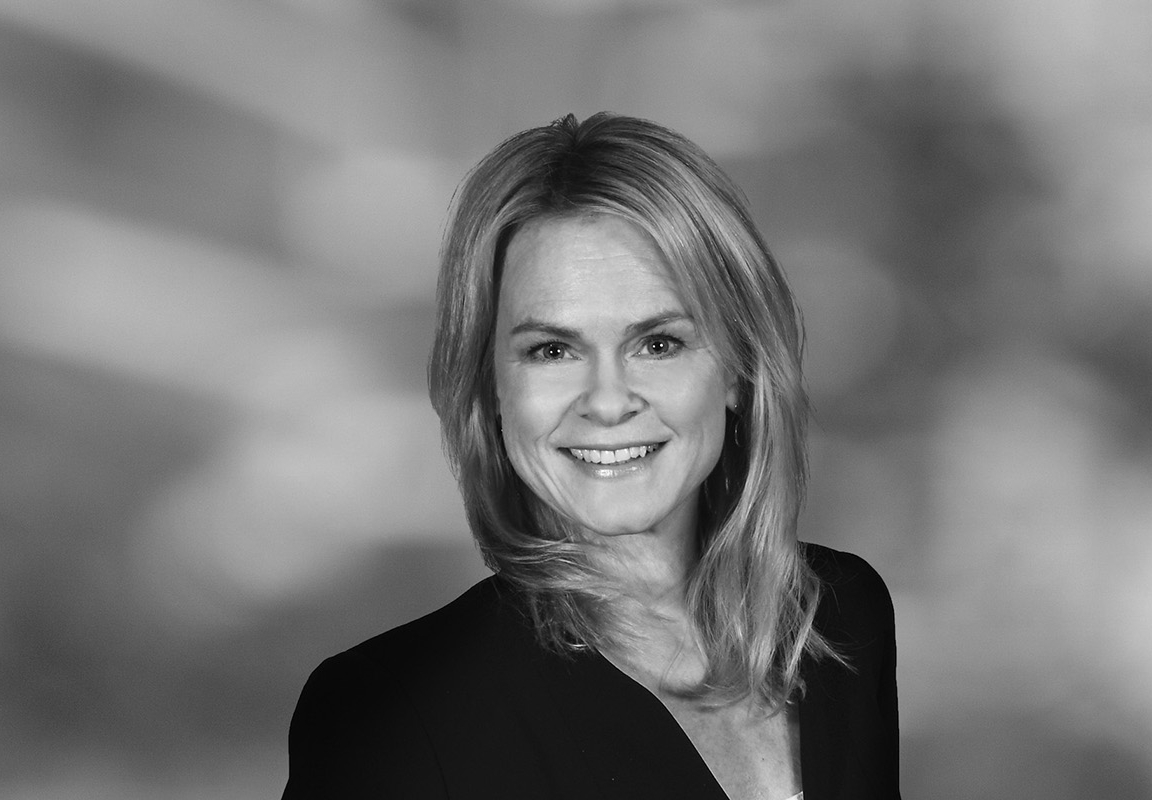
Funding Europe's broadband ambitions
Europe's recognition of the importance of fast and reliable connectivity predates the pandemic but as the demand for broadband connectivity has soared due to lockdown measures, how are countries across Europe placed for funding this high-speed provision?
17 min read
Subscribe
Stay current on your favorite topics
World in Transition
Our views on changing dynamics in energy, ESG, finance, globalization and US policy.
Our views on changing dynamics in energy, ESG, finance, globalization and US policy.
Demand for broadband connectivity has soared during the course of 2020 as lockdown measures saw employees, consumers and students rely on fast connectivity for work, learning and entertainment. According to the OECD, telecoms operators saw spikes in internet traffic of up to 60 per cent after lockdowns came into force.
Europe's domestic broadband infrastructure has generally proven resilient in the face of the usage spike, but the pressures placed on network capacity have raised concerns. Networks have been built to cope with evening surges in traffic rather than all-day business video calls and school classes, putting pressure on telecoms operators to maintain service levels.
In March 2020, EU Internal Market Commissioner Thierry Breton called on streaming services, operators and users to take "joint responsibility… to ensure the smooth functioning of the internet". Breton advised streaming services to offer standard rather than high definition video, and suggested users apply settings that reduce data consumption, in order to prevent network congestion.
175 ZB
175 zettabytes (ZB) of data are going
to be created and consumed globally by 2025.
1 ZB is equivalent to 100 million HD movies worth of data.
Source: International Data Corporation (IDC)
A long-term priority
Europe's recognition of the strategic importance of fast, reliable connectivity predates the pandemic and has been a focus area for the continent for more than a decade. The steep climb in demand for connectivity through lockdowns has underscored how crucial the internet has become.
In 2010 the EU launched its Europe 2020 strategy, which included targets to provide all Europeans with access to fast broadband with speeds in excess of 30 megabits per second (Mbps) by 2020; and ensure that more than half of European households could take super-fast connections of more than 100 Mbps. The EU made €15 billion available to Member States between 2014 and 2020 to fund this rollout, including loans worth €5.6 billion from the European Investment Bank (EIB).
An audit of the initiative published in 2018 by the European Court of Auditors found that while basic speeds of 30 Mbps were now ubiquitous across Europe, the provision of faster speeds in excess of 30 Mbps was patchy, with a bifurcation emerging between well connected urban centres and remote rural areas, where only 52 per cent of households had a connection with speeds of at least 30 Mbps.
So although the EU's initiatives have supported an increase in connectivity during the last decade, urgent investment is still required, especially following the experience of the pandemic.
65%
of global GDP will be digitalized by 2022
Source: IDC
The two key priorities for improving connectivity are to rollout better access to rural areas and drive further uptake of superior, materially faster Fibre-to-the-Home (FTTH) connections. Large numbers of networks still rely on copper cables to deliver broadband from street cabinets to premises, which slows connection speeds.
There is still work to do to accelerate FTTH provision. According to the FTTH Council Europe, an industry body, FTTH household coverage in France is only 57.1 per cent, with the UK and Germany only covering 15.1 per cent and 10 per cent, respectively.
Improving FTTH access, even where existing networks are functioning, is likely to require substantial long-term investment.
Jersey is one jurisdiction that has already taken the leap. In October 2018, Jersey achieved full-fibre access to 40,000 homes and businesses. The island made the decision to go fullfibre in 2011 and invested £50 million in the rollout, which will take up to nine years to recoup.
Jersey Telecom chief executive Graeme Millar told the BBC it cost £1,300 per home to install full-fibre, but estimated that reaching all homes in the UK, as an example, could see the cost per home increase to as much as £2,500 because of location and landscape.
The investment has paid off for Jersey through lockdown, with Jersey Telecom able to upgrade all users to speeds of 1 Gbps at no extra cost. Other countries could derive similar economic benefits from going full-fibre. In its report, the European Court of Auditors quoted research concluding that an increase of 10 per cent in broadband connections in a country could result in a 1 per cent increase in GDP per capita per year and a 1.5 per cent increase in labour activity over five years.
60%
Telecoms operators saw spikes in internet traffic of up to 60 per cent after lockdowns came into force
Source: OECD
Filling the financing gap
But funding investment in broadband networks and full-fibre rollout is likely to be complex. In most European countries, it is only during the last decade that infrastructure funds and institutional investors have become more comfortable with grouping broadband in the core infrastructure bucket. When it comes to debt financing, commercial banks are generally still more comfortable project financing traditional infrastructure assets like utilities and toll roads. Broadband infrastructure project finance has thus tended to incur higher interest rates.
There are, of course, exceptions to this status quo, most noticeable in France. The pricing of project financing applicable to fibre networks in France has been close or similar to that available for other French infrastructure projects in the past five years. Recent COVID lockdowns have even favoured telecom financing when compared to other infrastructure.
The fact that infrastructure funding models, such as Private Finance Initiatives (PFI) and Public Private Partnerships (PPP) based on PPP or concession contracts, are not available in all European countries in a broadband context has added additional layers of complexity for finance structures dealing especially with market risk where payments are not paid or guaranteed as in the case of PPP structures. The French market is one notable exception, with PPP financing used from 2008 to 2012 to finance traditional ADSL network rollouts.
Europe's telecoms markets are also mature and sophisticated, with operators generating annual revenues in excess of €210 billion. The market is competitive and telecoms operators have historically funded the deployment and upgrade of networks without the state having to step in with support. Governments are thus cautious about intervening in markets that are generally functioning well.
In the past, however, listed and privately owned telecoms operators, who have to answer to shareholders, have been reluctant to commit to substantial capital investment that carries long-term risk and will take years to generate return on capital.
As broadband access has become increasingly important for consumers and businesses, attitudes have shifted and private sector investment into broadband infrastructure has increased. There is a growing number of examples of telecoms operators teaming up with other investors and funds to finance this investment. Governments have also become more comfortable with stimulating private sector participation in broadband rollout.
Telefonica and Allianz, for example, signed an agreement for the creation of a joint venture to deploy FTTH in Germany with an investment of approximately €5 billion over the next six years. This is part of the German government's plan to provide nationwide gigabit-convergent internet infrastructure by 2025.
US$31tn
of cumulative consumer revenue
will be underpinned by 5G by 2030.
Source: Ericsson, the FT
In Italy, meanwhile, Telecom Italia has picked KKR as a partner for its Italian broadband programme, as well as an exclusive partner to develop its ultra-broadband business.
Germany has also seen Meridiam and Vodafone Deutschland partner to provide full-fibre optic access for 25 municipalities and their 40,000 inhabitants in Germany, while in France, for example, infrastructure fund Vauban and Axione have launched a €6 billion digital platform to consolidate the French firm's existing digital assets into one platform, with the unique trait of offering accessibility to all telecom operators.
The private sector is particularly challenged when it comes to reaching underserved rural areas where huge investment is required, but only a relatively few new customers can be reached. Networks in densely populated urban areas have therefore received the bulk of private sector investment. Some form of government financing support is seen as a necessary catalyst for investment in rural broadband.
Despite these complexities, there has nevertheless been strong appetite for broadband providers from infrastructure funds categorising broadband/fibre networks as core (digital) infrastructure assets with proven technology ensuring longterm and stable returns. In February EQT Infrastructure and Canadian pension fund OMERS acquired German FTTH provider Deutsche Glasfaser in a €2.5 billion deal from KKR and proceeded to merge the group with Inexio, another EQTbacked German broadband provider acquired by the firm in September 2019 from Warburg Pincus. The new owners have pledged investment of more than €7 billion over the coming years to speed up fibre rollout in rural Germany.
But while this example demonstrates the role that infrastructure funds can play, many infrastructure managers still prefer to back existing, installed infrastructure that comes with baked-in revenues and yields. Rumours that BT was considering selling Openreach, the open-access broadband network it owns, for example, would have been of much greater interest to infrastructure funds. BT has subsequently played down suggestions that Openreach could go on the block, but the fact remains that infrastructure fund appetite is directed towards deals with these kinds of characteristics, rather than involvement in building up networks from scratch.
Europe’s recognition of the strategic importance of fast, reliable connectivity predates the pandemic and has been a focus area for the continent for more than a decade
Funding models
European governments have adopted different approaches to addressing these funding challenges and gaps, following a variety of models to mobilise public and private capital for high-speed broadband investment.
France:
France has followed a hybrid model under the supervision of ARCEP (the entity controlling and regulating the telecom market in France).
In densely populated urban areas, the country has followed a market-driven solution. Competition between telecoms operators is intense in these lucrative markets, and sector operators can invest at good returns on capital, facilitating good connectivity for consumers.
In medium densely populated areas, major telecom operators (such as Orange) have undertaken towards ARCEP to develop fibre networks on identified geographical perimeters, based on the principle of equal access to the network for other operators. The principle is that the operator in charge of developing a network must offer the other operators the right either to co-finance the networks (in which case those operators have longterm rights of use of the networks) or to rent the existing network.
In rural and lower-density populated populated areas, by contrast, the French government has stepped in to support the funding of broadband infrastructure. Launched in 2013, the Plan France Très Haut Débit (Broadband Programme) was set up by the state to support the funding of high-speed broadband connections in rural markets that would not be financially viable for commercial operators.
87%
of households in Europe enjoy internet access
Source: CCSA, the FT
The programme was focused on leading new network developments initiated by private players and local authorities, as well as granting public funding to certain projects in especially remote and difficult to reach locations. In 2015, a new digital department within the Economics Ministry was set up to oversee new broadband projects and their eligibility for public funding.
Under this framework, the state has stepped in as a private sector partner in areas served by only a single operator and where speed and service varies across the area; and as the primary source of funding in geographical locations where there is little or no provision.
France has been at the forefront of applying PPP/concession structures to broadband projects in regions where there is a sole operator in place and further network capacity is required, or where there are no incumbent operators and no provision.
In these scenarios, network operators and public authorities both contribute to the funding of new network infrastructure, with the local authorities drawing down finance from the Plan France Très Haut Débit. The first projects launched were awarded large public subsidies, but more recent projects were financed with very limited to no public subsidies. Upon completion, the private sector service provider is granted a concession to run the network for 25 to 30 years in return for contributing to the upfront investment in the network.
This model has seen existing operators focus on their urban networks, and opened up space for new players with PPP portfolios to establish their franchises in rural and semi-rural parts of the country.
Finland:
As a large country with a small population, Finland has faced distinctive geographic challenges when it comes to providing nationwide fibre broadband connectivity. Finns are currently the largest consumers of mobile data in the Nordic and Baltic countries, using 38 per cent of all mobile data in these countries, with consumption per capita reaching 36.3 gigabytes in 2019. The high volume of mobile data use is explained by the fact that mobile network operators in Finland are able to offer fast mobile subscriptions with unlimited data transfer at relatively low prices. The ability of households to rely on mobile networks has to some extent resulted in less pressure on high-speed fixed networks and thus, Finland currently ranks behind most of the Nordic and Baltic countries in terms of access to fixed connection with speeds of at least 100 Mbps. Yet despite these obstacles, the FTTH Council ranks Finland above France, the UK, Germany and Italy on FTTH penetration rates.
Different countries have different requirements, but what does emerge as a universal theme is that some form of cooperation is required between the private and public sectors to achieve the best financial outcomes
Proactive state intervention has been the cornerstone of Finland's progress. In 2010 the Finnish government launched a broadband programme designed to pull together state, municipal and private sector capital to expand the country's highspeed broadband infrastructure.
Under this main scheme (the application period of which has expired but is expected to renew and continue in similar form as of 2021), government funding is made available for network development in remote areas where provision on market terms is unlikely. Support is open to all applicants through public tenders and sees the government covering 33 per cent, 44 per cent or 58 per cent of the eligible costs depending on the municipality's financial status, with the relevant municipality offering from 8 per cent to 33 per cent and the private sector applicant putting up a minimum of 34 per cent.
In return for this state support, private partners have to commit to offering network and communications services for at least ten years and allow other operators to access the funded network on reasonable terms. Applicants are also screened pre-project with respect to the scope and pricing of services they plan to offer, as well as their financial status and risk analysis of the operations and finances of the proposed project.
In addition to this main scheme, smaller support schemes are available, such as the rural programme, which offers financial support for municipalities, cooperatives and SMEs in rural areas for the construction of broadband networks, with the support covering 50 or even 70 per cent of the total costs.
UK:
In the UK, the private sector has been the primary engine of provision, although the government has stepped in to support investment in fast broadband provision to rural areas.
The Treasury pledged £5 billion in the March 2020 Budget to fund gigabit networks in the 20 per cent of the country most difficult to reach. This funding is deployed via Building Digital UK (BDUK), a part of the Department for Digital, Culture, Media and Sport (DCMS).
BDUK runs voucher schemes that contribute to the costs incurred by small businesses and communities when installing high-speed broadband in rural areas. Qualifying premises can receive vouchers of up to £3,500 for SMEs and £1,500 for residences.
BDUK is also in the process of outlining a framework for investing directly to connect public sector sites in hard to reach areas to highspeed broadband. This connectivity can then be levered by commercial players to reach other properties nearby. BDUK is also looking at putting out contracts to tender to deploy fast broadband in areas where the market has not done so.
Germany:
As in the UK, the German market is also predominantly supplied by the private sector, and private investment in the sector has increased substantially, as evidenced by the €2.5 billion acquisition of German FTTH provider Deutsche Glasfaser by EQT and OMERS.
To support the rollout of highspeed internet infrastructure, the German government has set itself a target of having gigabit-capable networks installed nationwide by 2025, and has funnelled broadband funding through the state-backed development bank KfW.
In April of this year, the KfW announced together with Germany's Federal Ministry of Transport and Digital Infrastructure (BMVI) to support long-term, country-wide fibre-optic network expansion through the "Digital Infrastructure Investment Loan" and "KfW Digital Infrastructure Syndicated Loan" funding programmes. The former makes low-interest loans available to qualifying projects in rural areas. This funding will be made available through the KfW network of partner banks and savings banks. The state-backed BMVI funds will keep interest rates low and allow for KfW to offer terms of up to 30 years and fixed-interest periods of up to 20 years combining favourable conditions with a high degree of planning security.
Separately, Germany's development of a new 5G network has lagged other European countries and is still early in its development. The relevant Federal Network Agency (BNetzA), however, has doubled the rate at which it has awarded licences to applicants deploying private 5G networks.
Italy:
Italy has placed Cassa Depositi e Prestiti SpA (CDP), the Turin-based promotional bank controlled by the country's finance ministry, at the heart of its broadband rollout plans.
At the end of 2016, CDP partnered with state-owned utility Enel in a €3.7 billion joint venture to form Open Fiber, a wholesale-only fast broadband provider.
In June 2020 CDP and Enel commenced talks with Telecom Italia (TIM) (in which CDP also owns a stake) to sell Open Fiber with a view to merging it with the larger TIM network. Combining the two networks has been encouraged by the Italian government, which wants to see the formation of a single, fast broadband operator that can be tasked with rolling out high-speed connectivity across the country. The government is keen to avoid duplicating investment and overservicing in certain regions, and also wants to retain some kind of state influence over what it deems a critical piece of infrastructure.
If a tie-up between Open Fiber and TIM proceeds, it could also see a role for infrastructure funds to step in, with various infrastructure funds canvassed about their interest in participating in the potential consolidation of the networks.
100 Mbps
The EC's strategy on Connectivity for a European Gigabit Society sets out a target of access to connectivity offering at least 100 Mbps for all European households by 2025
Source: The European Commission
A way forward
The various frameworks adopted by European countries for high-speed connectivity rollout all have their strengths and weaknesses.
The French model has zoned in on regions where funding is most required, leaving the private sector to take care of urban areas. It's PPP funding approach to building out new networks has catalysed private sector investment in rural areas and allowed new network operators to emerge. In some cases, local authorities have also battled to oversee concessions post-completion.
The UK model has offered incentives for commercial operators to expand into rural areas, facilitating the formation of a commercially owned and operated network that is competitive and financially sustainable. The caveats to this approach are that it can lead to overbuild, with rival operators targeting the same rural areas and ignoring others, and it can favour established players of emerging network operators.
The German model locks in low rates for borrowers and draws in third-party capital thanks to the KfW providing loans and anchoring syndicates. Like the UK model, however, overbuild and deploying excess resources into the same areas are risks.
The more centralised model adopted by Italy, where the government is a shareholder in the network provider, aligns the shareholder with the long-term aims of government. Indeed, a big factor in the success of the Jersey case was that Jersey Telecom is 100 per cent owned by the state.
In addition to the initiatives of Member States, the European Union has also implemented funding mechanisms to support fast broadband rollout.
The Connecting Europe Broadband Fund (CEBF) will invest in broadband projects in underserved areas via minority equity positions, mezzanine and junior debt financing, writing ticket in the €1 million and €30 million range.
The EU is also readying a new Connecting Europe Facility programme (CEF2 Digital) that is scheduled to run from 2021 to 2027. The €3 billion funding programme will support digital infrastructure investment in Member States.
As has been the case with its predecessor programme, CEF will aim to anchor projects and attract private sector co-investment. CEF 2 will run in concert with the Connecting Europe Broadband Fund (CEBF) launched in 2018.
Different countries have different requirements, but what does emerge as a universal theme is that some form of cooperation is required between the private and public sectors to achieve the best financial outcomes for commercial operators and strategic objectives for governments.
As broadband's position as essential national infrastructure is reinforced, European countries will have much to learn from observing each other's approaches to funding high-speed connectivity.
Click here to download full "Funding Europe's broadband ambitions" PDF.
White & Case means the international legal practice comprising White & Case LLP, a New York State registered limited liability partnership, White & Case LLP, a limited liability partnership incorporated under English law and all other affiliated partnerships, companies and entities.
This article is prepared for the general information of interested persons. It is not, and does not attempt to be, comprehensive in nature. Due to the general nature of its content, it should not be regarded as legal advice.
© 2020 White & Case LLP

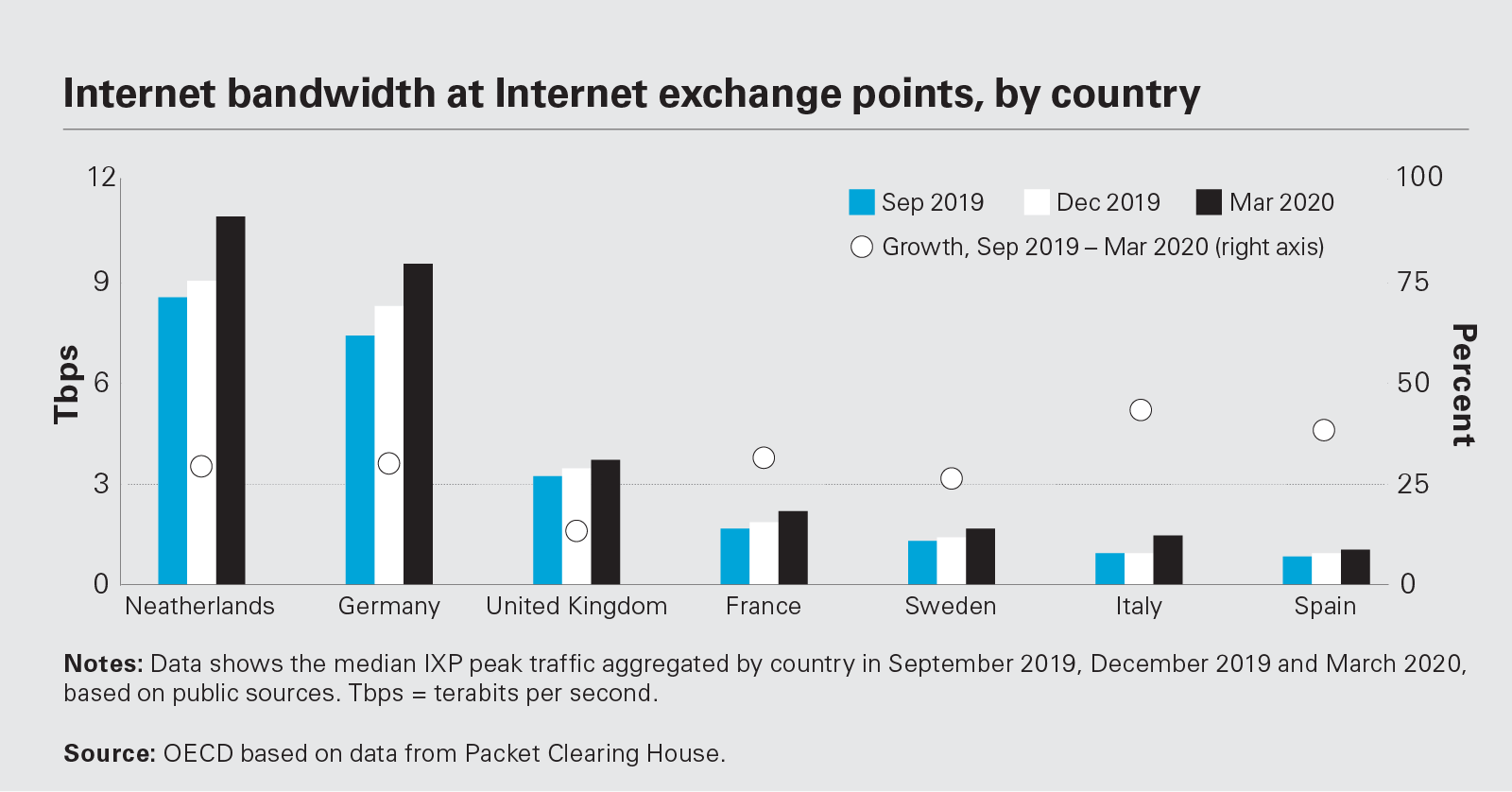 View full image of 'Internet bandwidth at internet exchange points, by country' (PDF)
View full image of 'Internet bandwidth at internet exchange points, by country' (PDF)
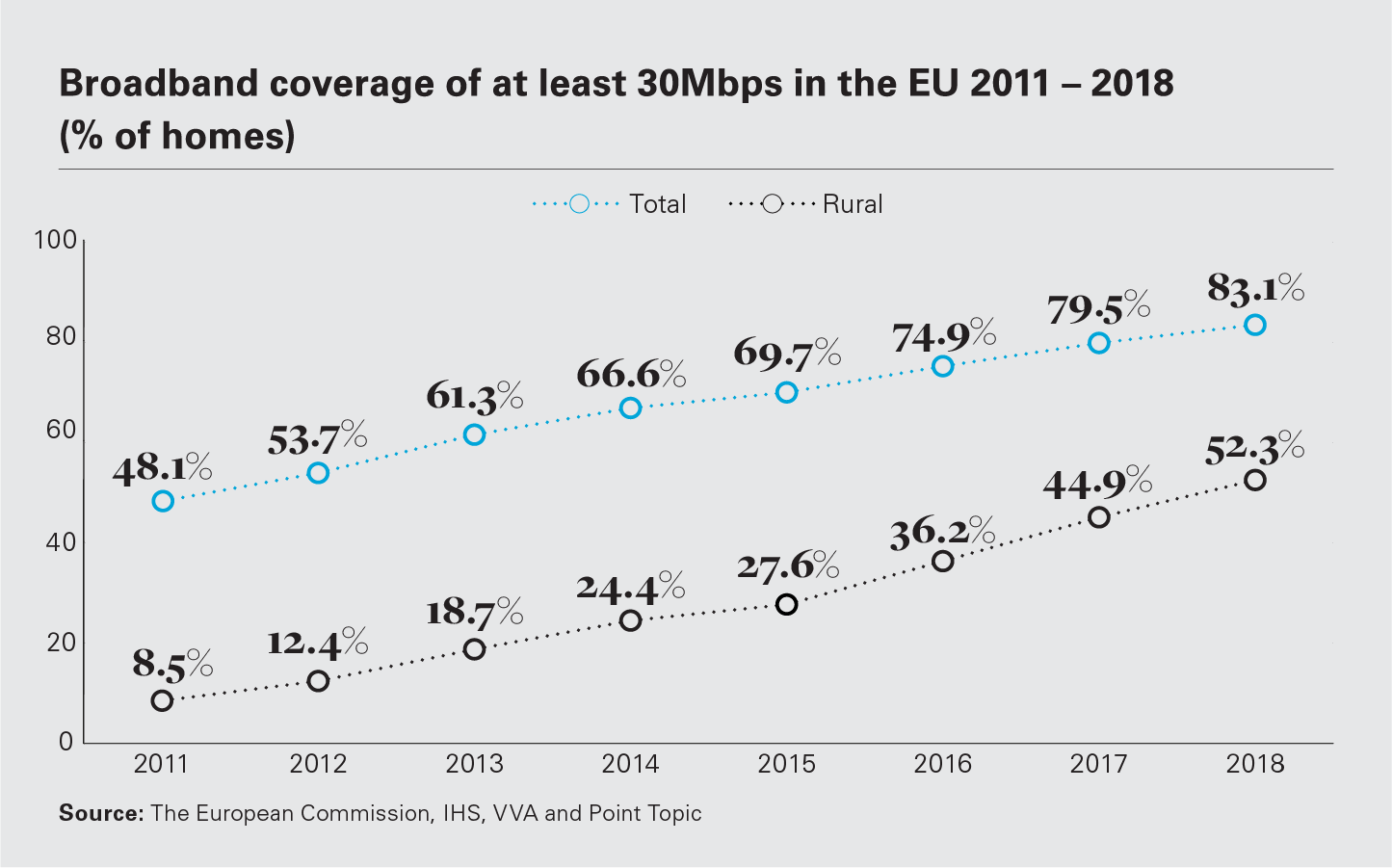 View full image of 'Broadband coverage of at least 30 Mbps in the EU 2011 – 2018 (% of homes)' (PDF)
View full image of 'Broadband coverage of at least 30 Mbps in the EU 2011 – 2018 (% of homes)' (PDF)
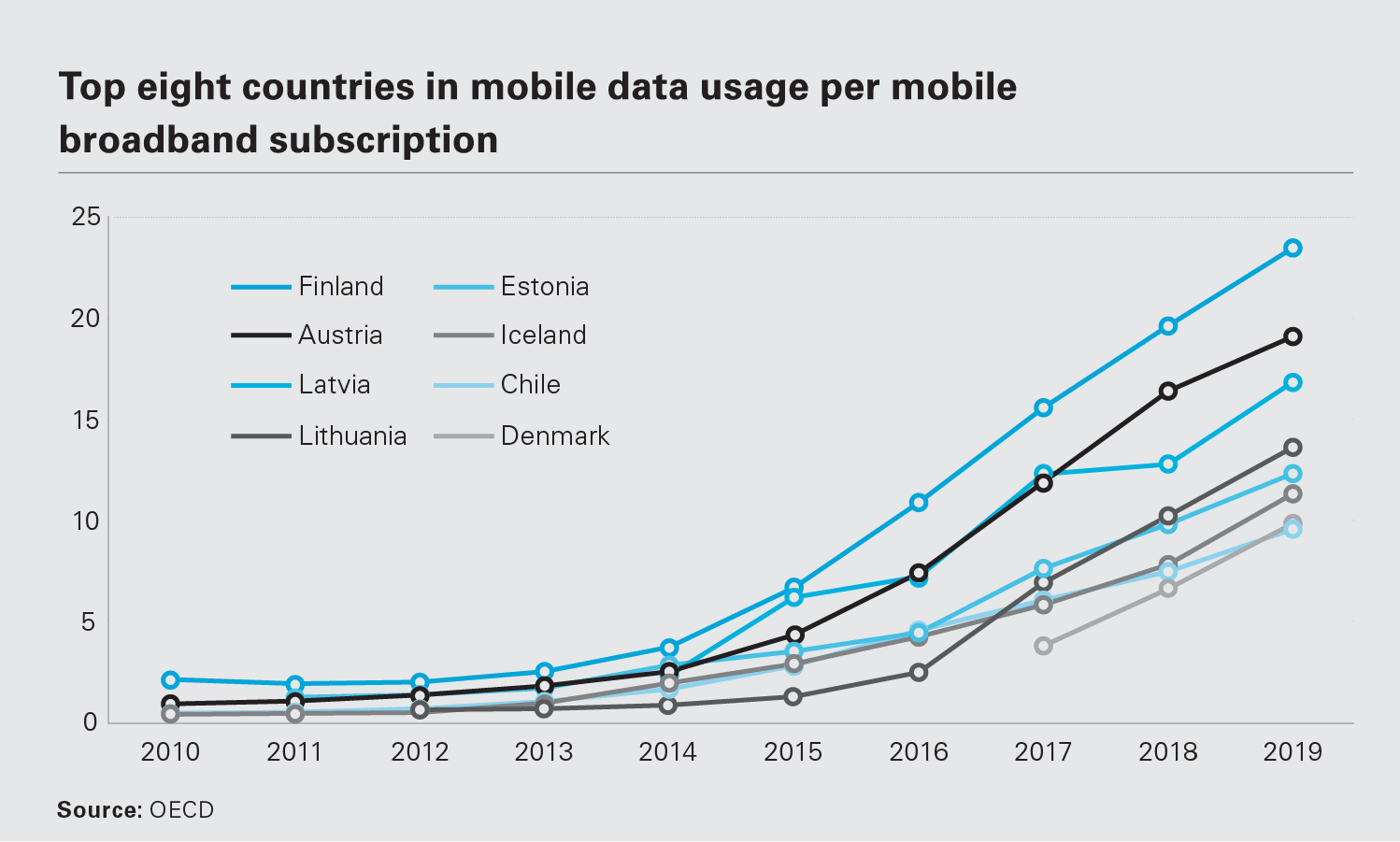 View full image of 'Top-eight countries in mobile data usage per mobile broadband subscription' (PDF)
View full image of 'Top-eight countries in mobile data usage per mobile broadband subscription' (PDF)
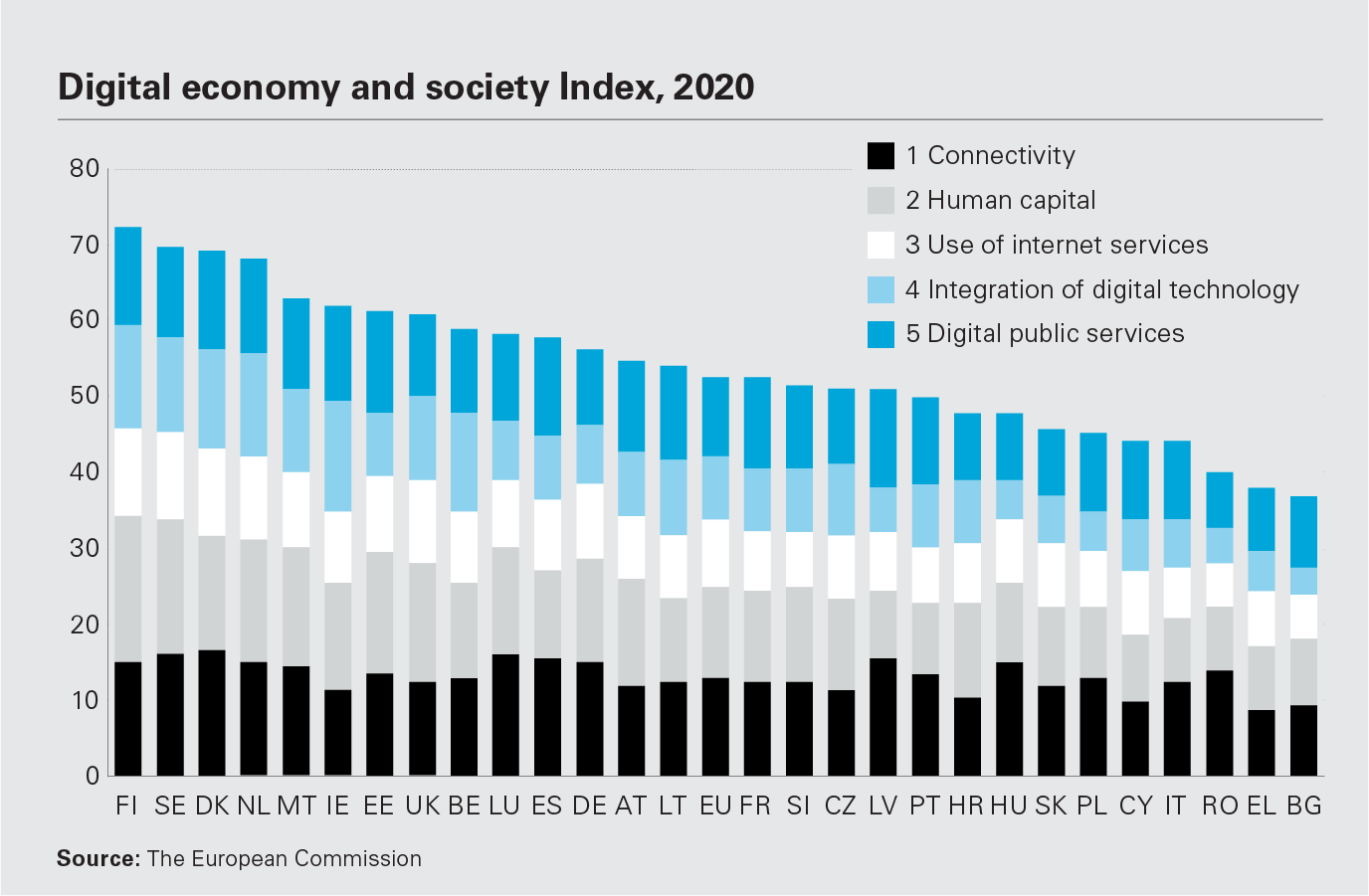 View full image of 'Digital economy and society index, 2020' (PDF)
View full image of 'Digital economy and society index, 2020' (PDF)
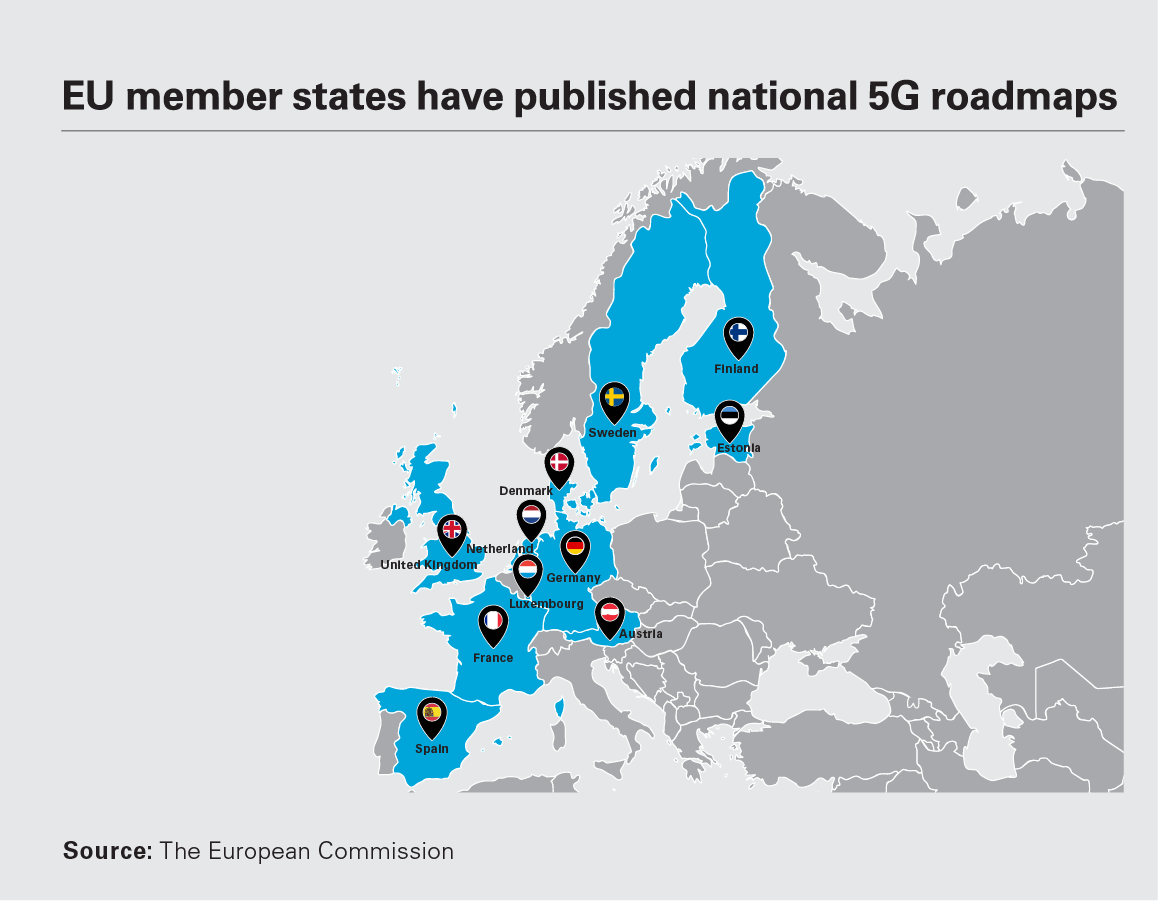 View full image of 'EU Member States have published national 5G roadmaps' (PDF)
View full image of 'EU Member States have published national 5G roadmaps' (PDF)
